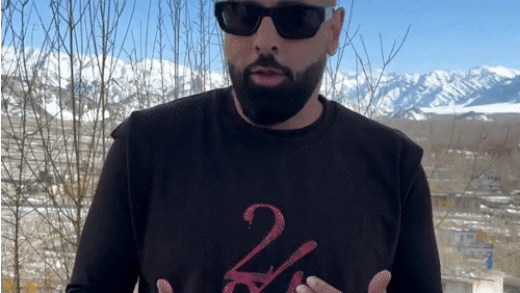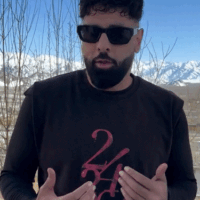DAR ES SALAAM, Feb 07 (IPS) – At 9 a.m. on Monday, Mariam Msemwa clutched her clinic card tightly as she stood in line at Bagamoyo District Hospital’s HIV Clinic in Tanzania’s coastal region. The 19-year-old had been here many times before, picking up monthly doses of antiretroviral (ARV) drugs that kept her alive. But today was different.When she reached the counter, the nurse flatly told her. “There’s no more free medication, ” she said. “You’ll have to buy it yourself.”
Msemwa felt the words like a punch to her chest. Buy it? With what? Her mother, a street vegetable hawker, could barely afford their next meal. The ARVs had always been free, provided under a U.S.-funded program. But now that lifeline was gone.
“I don’t know what to do,” Msemwa said. “Without this medicine, I’m going to die.”
A Lifeline Cut Off
For years, Tanzania’s fight against HIV had relied heavily on funding from the President’s Emergency Plan for AIDS Relief (PEPFAR), a U.S. initiative that had injected over USD 110 billion into fighting HIV/AIDS worldwide since 2003. The program funded everything—medication, testing, community outreach, and home-based care.
But in early 2025, with the return of Donald Trump to the White House, an executive order froze all new foreign aid spending. In a matter of days, USD 450 million in annual PEPFAR funding for Tanzania vanished, cutting off free ARVs for nearly 1.2 million Tanzanians.

Catherine Joachim, acting executive director of the Tanzania Commission for AIDS (TACAIDS), had spent weeks in frantic meetings, her phone constantly buzzing with calls from worried health officials and aid workers.
“This is a serious blow which ushers in a complete collapse of our HIV response,” she said. “For nearly two decades, PEPFAR kept people alive. Now, they will probably suffer.”
The fallout was immediate. Clinics that once provided free ARVs had run out. Home-based care programs were shutting down. And across the country, patients were being turned away with nowhere to go.
“I had a mother come in yesterday,” said Abdallah Suleiman a treatment literacy trainer for people living with HIV in the historical town of Bagamoyo . “She was begging for just a few pills for her son, who’s been on ARVs since birth. I had nothing to give her. Nothing.”
End of Free Care
It’s nearly midday at the bustling Mbezi bus terminal in Dar es Salaam, and Helena Mkwasi is standing over a pot of boiling water, stirring maize flour into a thick, stiff ugali. Smoke curls around her as she moves quickly, balancing the demands of her small food stall with the worries that never leave her.
“I wake up early, light the fire, and rush to the market for meat, cooking oil, tomatoes—whatever I can afford that day,” she says, adjusting the colorful khanga wrapped around her waist. Business is slow, as usual. The money she makes is just enough to buy food for her two children.
But these days, money isn’t her biggest concern.
“For years, I’ve been getting my ARVs for free,” she said. “Now they’re saying that has stopped. I don’t know how I’ll survive.”
Mkwasi was diagnosed with HIV when she was 19. She doesn’t remember much from that day, only the way her heart pounded as the nurse explained viral loads and CD4 counts. She thought it was a death sentence. Then she started on antiretroviral therapy, and the medicine worked. Her health improved. She had her children safely. She built a routine—cooking ugali, serving customers, taking her pills every evening with a cup of warm water.
“Without the medicine, I’ll get sick again. I won’t be able to work,” she says, glancing at the bubbling pot. “Then what happens to my kids?”
Around her, the bus terminal hums with life. Conductors shout out destinations, men weave between traffic selling bananas and bottled water, and the air smells of grilled meat and diesel fumes. Mkwasi wipes sweat from her forehead and keeps stirring, but the weight of uncertainty lingers.
A Worsening Crisis
The numbers painted a grim picture. Without ARVs, HIV-positive individuals risk developing full-blown AIDS, making them vulnerable to deadly infections like tuberculosis and pneumonia. Health experts warned that Tanzania could see at least 30,000 additional HIV-related deaths in the next two years if the crisis wasn’t resolved.
Deogratius Rutatwa, CEO of the National Council of People Living With HIV/AIDS, sat at his desk, staring at the endless reports detailing the worsening situation. His phone, still warm from his last call, kept ringing.
“This is a disaster,” he said, rubbing his temples. “PEPFAR wasn’t just about giving out medicine—it funded education, prevention, community support. Now, everything is gone.”
His inbox was flooded with desperate messages from community organizations. What do we do now? they asked. But Rutatwa had no answers.
“I wish the people making these decisions could see what’s happening here,” he said. “They talk about budgets and policies, but on the ground, it’s about a mother walking miles to get her child tested. It’s about a teenager who just found out he’s positive and needs help, not rejection. It’s about keeping people alive.”
Live or Die
Mary Tarimo had dedicated her life to helping HIV patients stay on treatment. As a home-based care supervisor at the Bagamoyo hospital’s HIV department, she spent her days navigating the dusty streets of Dar es Salaam, checking in on patients, ensuring they orally took their medication.
Now, she was watching helplessly as people who had been stable for years began to relapse.
“There’s a woman I’ve been caring for since 2015,” Tarimo said. “She never missed a dose. But now, she’s stopped taking her medicine.”
The woman, a mother of three who made a living as a street cook, had broken down in tears just days earlier.
“She told me, ‘Mama Tarimo, I have to choose between feeding my children and buying my medicine,’” Tarimo recalled. “How do you respond to that? What kind of choice is that?”
Across the Bagamoyo town, the same tragedy was unfolding. People were showing up at hospitals with fevers, night sweats—the first signs of opportunistic infections. Some, ashamed that they could no longer afford their treatment, simply stopped coming.
“I met a man last weekend—he was diagnosed in 2010. Never missed a single appointment,” Tarimo said. “Now, he’s scared. He told me, ‘I feel like I’m back where I started.’”
She paused, shaking her head. “The worst part? We spent decades building this program, making sure people knew that HIV isn’t a death sentence if you stay on treatment. And now, just like that, we’re watching all of it fall apart.”
Searching for Solutions
Despite the bleak outlook, Joachim refused to give up.
“We are not just sitting back and watching this happen,” she said. “We’re talking to other international partners, private donors, and our own government to find alternative funding.”
The Ministry of Health had pledged to reallocate part of its budget to keep ARVs flowing, and there was hope that other donor countries might step in.
“We are looking at every possible solution,” Joachim said. “People have a right to treatment. We will do everything we can to make sure they get it.”
But experts warned that Tanzania’s national health budget simply couldn’t cover the $260 per patient per year needed for ARVs. For many, the cost—ranging between USD 15 and USD 20 per month—was almost impossible to afford.
“The reality is, without external support, we cannot bridge this gap,” Rutatwa admitted. “And that means lives will be lost.”
A Race Against Time
Back at Bagamoyo Hospital, Tatu sat on a bench, staring at the floor. She had no idea what to do next.
“I don’t want to die,” she whispered. “I just want my medicine.”
As she stood up to leave, she glanced around at the others in the waiting room—young, old, mothers with babies, men with hollow eyes. They were all waiting for something that was no longer there.
For now, Tanzania was scrambling to find a solution. But for the millions who relied on PEPFAR, time was running out.
IPS UN Bureau Report
Follow @IPSNewsUNBureau
Follow IPS News UN Bureau on Instagram
© Inter Press Service (2025) — All Rights ReservedOriginal source: Inter Press Service
Source link
#Tanzanians #HIV #Left #Crisis #USAID #Funding #Ends


















